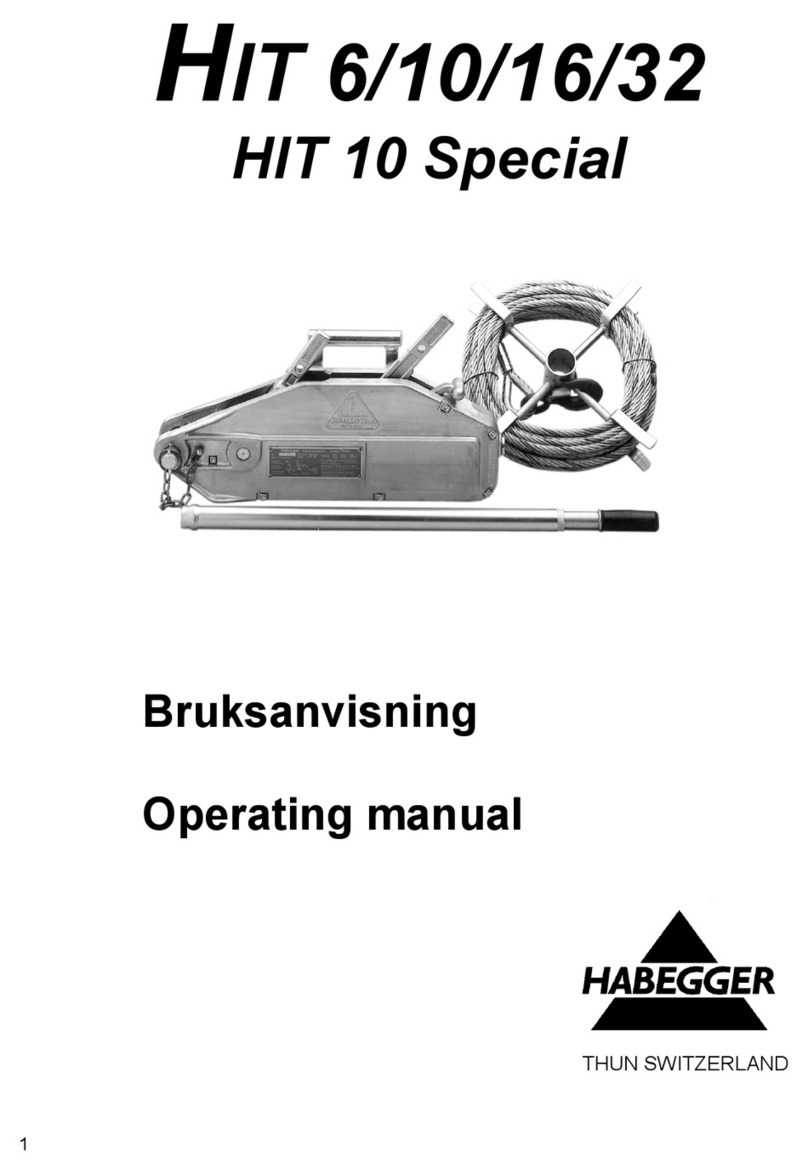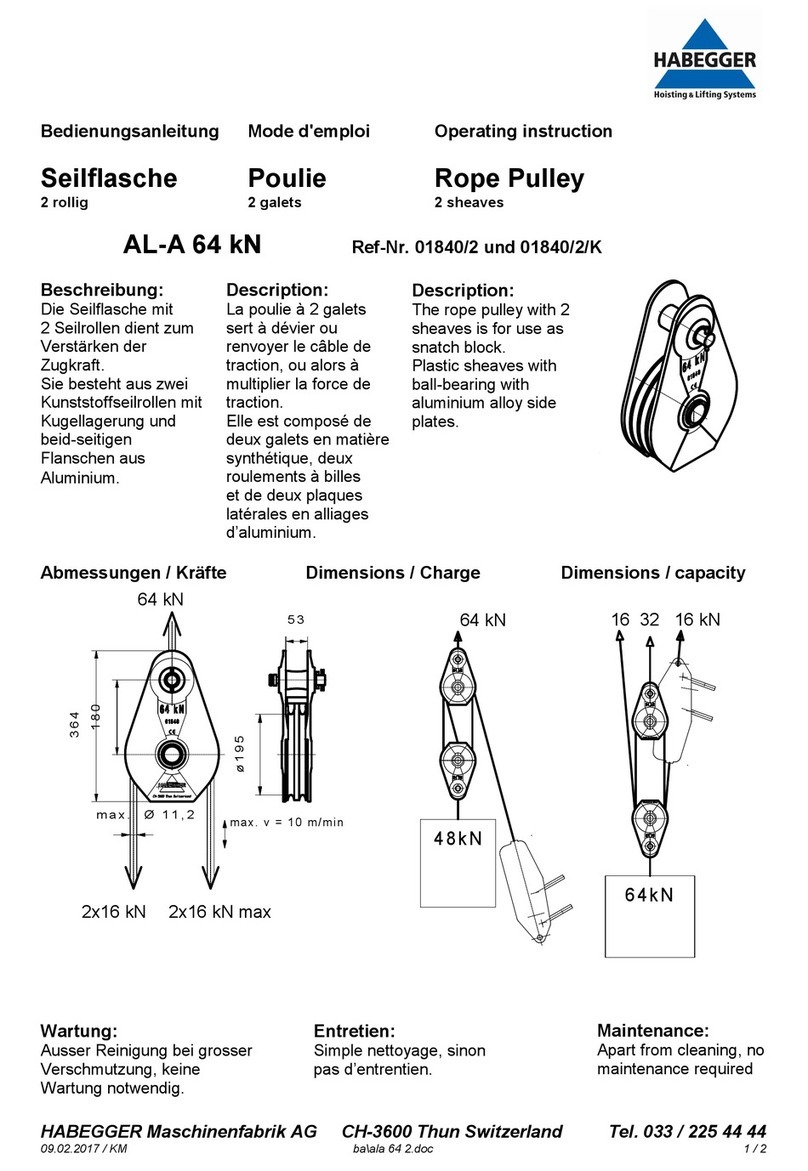User Guide
TGT. 25.06.2019 Technical Page 3 of 20
©Copyright by Habegger Maschinenfabrik AG Version 04 / 25.06.2019
Contents
1General specifications ........................................................................................................................................................... 6
1.1 Drive mechanism.......................................................................................................................................................... 6
1.2 Housing cover ............................................................................................................................................................... 6
1.3 Rope.............................................................................................................................................................................. 6
1.4 Operation ..................................................................................................................................................................... 6
1.5 Electrical control system .............................................................................................................................................. 6
1.6 Limit switch................................................................................................................................................................... 7
1.7 Lowering and breaking ................................................................................................................................................. 7
2Assembly and performance .................................................................................................................................................. 8
3Safety instructions................................................................................................................................................................. 9
3.1 Proper use .................................................................................................................................................................... 9
3.2 Safety instructions in this user guide............................................................................................................................ 9
3.3 General safety instructions......................................................................................................................................... 10
3.4 Approved users........................................................................................................................................................... 13
3.5 Warranty and Guarantee ........................................................................................................................................... 13
3.6Actions in case of emergency ..................................................................................................................................... 13
4Technical specifications....................................................................................................................................................... 14
5Operation ............................................................................................................................................................................ 15
5.1 Preparation................................................................................................................................................................. 15
5.2 Insert rope .................................................................................................................................................................. 16
5.3 Pulling and hoisting .................................................................................................................................................... 17
5.4 Lowering ..................................................................................................................................................................... 17
6Faults ................................................................................................................................................................................... 18
7Maintenance ....................................................................................................................................................................... 19
8Replacement parts .............................................................................................................................................................. 19
9Disposal ............................................................................................................................................................................... 20
10 Accessories.......................................................................................................................................................................... 20
10.1 Supporting pipe .......................................................................................................................................................... 20
10.2 Storage boxes ............................................................................................................................................................. 20
10.1 Generators.................................................................................................................................................................. 20





























